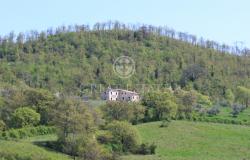 The period uniforms in Spike Lee's new WWII Resistance drama are unusually perfect replicas of those worn by German and American forces at the time - thanks to a unique piece of Italy's clothing heritage.
The period uniforms in Spike Lee's new WWII Resistance drama are unusually perfect replicas of those worn by German and American forces at the time - thanks to a unique piece of Italy's clothing heritage.
"All the cloth for military uniforms in the '40s was made in two places - England or Prato," Massimo Bernocci of top Italian film costume supplier O.B. Stock said.
"The original material can still be found in warehouses of Prato's oldest firms - and we know where to find it".
Bernocci said O.B Stock - which provided costumes for Gladiator, Braveheart, Gangs of New York and Life is Beautiful - had been combing the back rooms of the "most traditional" wool mills in this Tuscan city, a European textile hub since the Middle Ages.
"Only in Prato can you find the types of gabardine, flannel and worsted wool worn by the soldiers on both sides," Bernocci said.
New fabric identical to the old samples is now being stitched together for Lee's film, after being treated to age it properly, he said.
Lee is set to start work in mid-month on the film, which blends the experiences of Afro-American 'Buffalo Soldiers' with a Nazi massacre of Italian villagers.
The film has the working title Miracle at Sant'Anna, the same as the 2002 book by bestselling African-American novelist James McBride on which it is based.
The director, who has charted multiple aspects of the African-American experience since his debut in the mid-1980s, is eager to tell the world about the segregated black soldiers who took on a crack SS Panzer division in western Italy.
The Italian Resistance helped the Buffalo Soldiers break through the German lines in the coastal area of Tuscany in 1944 - despite ferocious SS tactics exemplified in the murder of the village's 560 men, women and children.
In McBride's book, toward the end of World War II, four Buffalo Soldiers from the army's 'Negro 92nd Division' find themselves separated from their unit and behind enemy lines.
They discover humanity in St. Anna di Stazzema in the peasants who shelter them and in the affection of an orphaned child.













